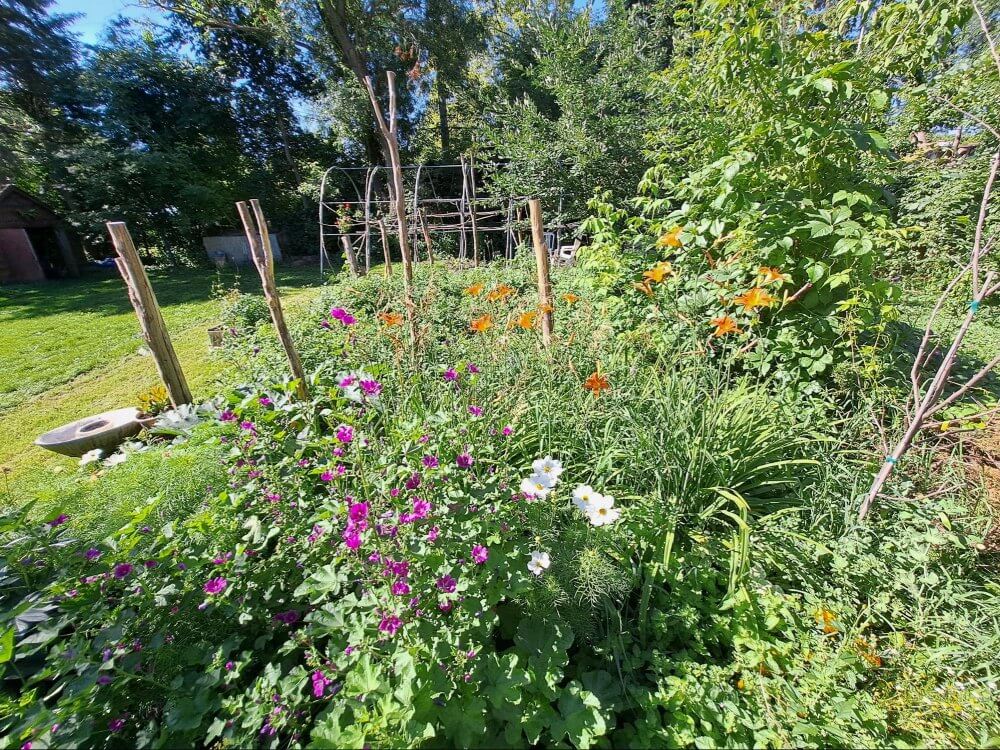

Ashley, our Project Manager & Volunteer Coordinator, is a mastermind at sourcing things in a sustainable manner and making use of the fresh ingredients available in each season. She started with Green Iglu as a Greenhouse Technician, so also knows all the ins and outs of gardening. We asked Ashley to share her top tips, and here is what she had to say…
My most important tips come from years of trial and error (still in progress!) with continued advice from my dad, aunties, and growing up in my grandmother's garden. From the added benefits of nutrient-dense compost to the hard work and exercise that goes into maintaining a growing space; I have tremendous passion for growing locally and believe growing food or eating local produce is core to longevity.
It was easy for me to discover a passion for pursuing a degree in biology, focusing on plant biology. I am always learning from my gardens and others – I would love to hear your tips and tricks too!
Without further ado, here are my tips to level up your garden:
Seed packages provide this information- but if you are estimating the space required, overestimate rather than under. Remember, most plants will grow larger than expected. This leads to the drowning out the smaller plants (such as herbs)- stunting those smaller plants' growth surrounding larger plants. That being said, larger plants are great for providing shade within a reasonable distance. Large plant examples: Squashes, tomatoes, kale, melons.
Planting herbs and companion flowers in between vegetables reduces predatory insects.The more flowers you plant the less likely your vegetables will be eaten by beetles, moths, or slugs. Every year I plant an abundance of marigolds and nasturtiums.
Other alternatives, I place a shallow tray of beer in my garden near squashes, cucumbers, and other vegetables that will hang low onto the soil.
I often monitor all my vegetable plants to be sure they are not hanging into the soil- as this causes yellowing and rotting.
Wood ash is also an effective method to eliminate unwanted slugs in the garden.

Calcium is important for plant wall formation and structural strength. For extra nutrients, save your eggshells. If you have access to a grinder, even better. Many experienced gardeners swear by this.
Composting is the easiest way to eliminate excess use of garbage bags going into the landfill. I throw everything from coffee grounds, vegetable peels, fruit pits, leaves, broken down branches, and grass clippings.
Plant material is composed of carbon and water. Composting is a great way to return carbon back into the soil for healthier plant growth. The soil will look great too!
Tomatoes can easily turn into a jungle-like mess. Stake your tomatoes with either tomato roll tape or pantyhose early on. Keep guiding your tomatoes as they grow to keep them from bending over and stretching downward toward the ground.
If you have too many tomatoes (which often occurs) can be frozen whole in ziplock bags and used for soups all winter.
Of course, water is essential for plants to grow; it is equally important not to overwater. Overwatering can lead to the death of the fruit, a good example, zucchinis are prone to stunted fruit development by turning yellow and will fall off if overwatered.
Feel the soil often. If your plants are slowing down in growth and the soil is dry, then you are underwatering.
I love to grow extra herbs to store over the winter-dill, oregano, and thyme. I cut them throughout the summer and hang them to dry. I usually have enough right until the following spring.
Always grow what you love or consume the most first. Growing a variety of fruits and vegetables is part of the fun when trying new recipes and new things to pickle for overwintering.
I am inspired by many cultures to try new produce to grow. For example, tomatillos are great for making green salsa, pickling fennel or daikon radish for winter salads, and okra for jambalaya rice or soups.
My tip for trying new vegetables is to plant what you love to eat and add in a new vegetable or two each year.
Invest in adding one or two new plants that will return next year. Try planting berry bushes, grapes (great for adding shade to your greenhouse), or native plants from your region.

Be sure to pay attention to harvest dates on your seed package. It can be helpful to add this date on the label that marks your plant name. Nothing is worse than your efforts going to waste because of a late harvest. Late harvesting can lead to bitter/hard vegetables or an invasion of insects eating your crops.
Lastly, the best part of growing and harvesting is sharing and exchanging with neighbors, friends and family!
Thanks for taking the time to learn with us today and for giving our team the opportunity to support you in your growing journey!
You can reach Ashley directly at ashley@greeniglu.com, and can always contact the team at info@greeniglu.com. Let us know if you make use of any of the tips above. We would love to hear from you about your experience!








